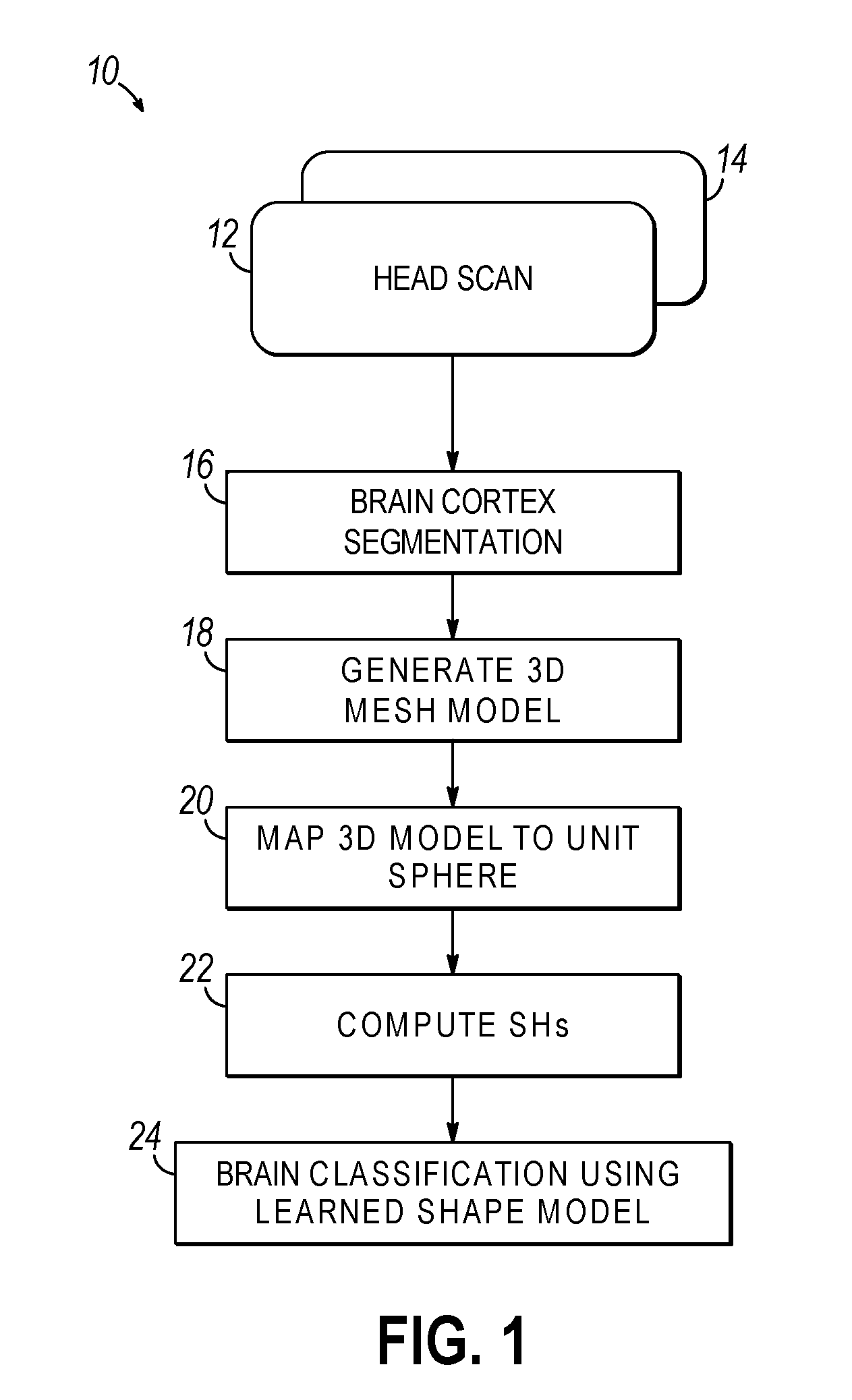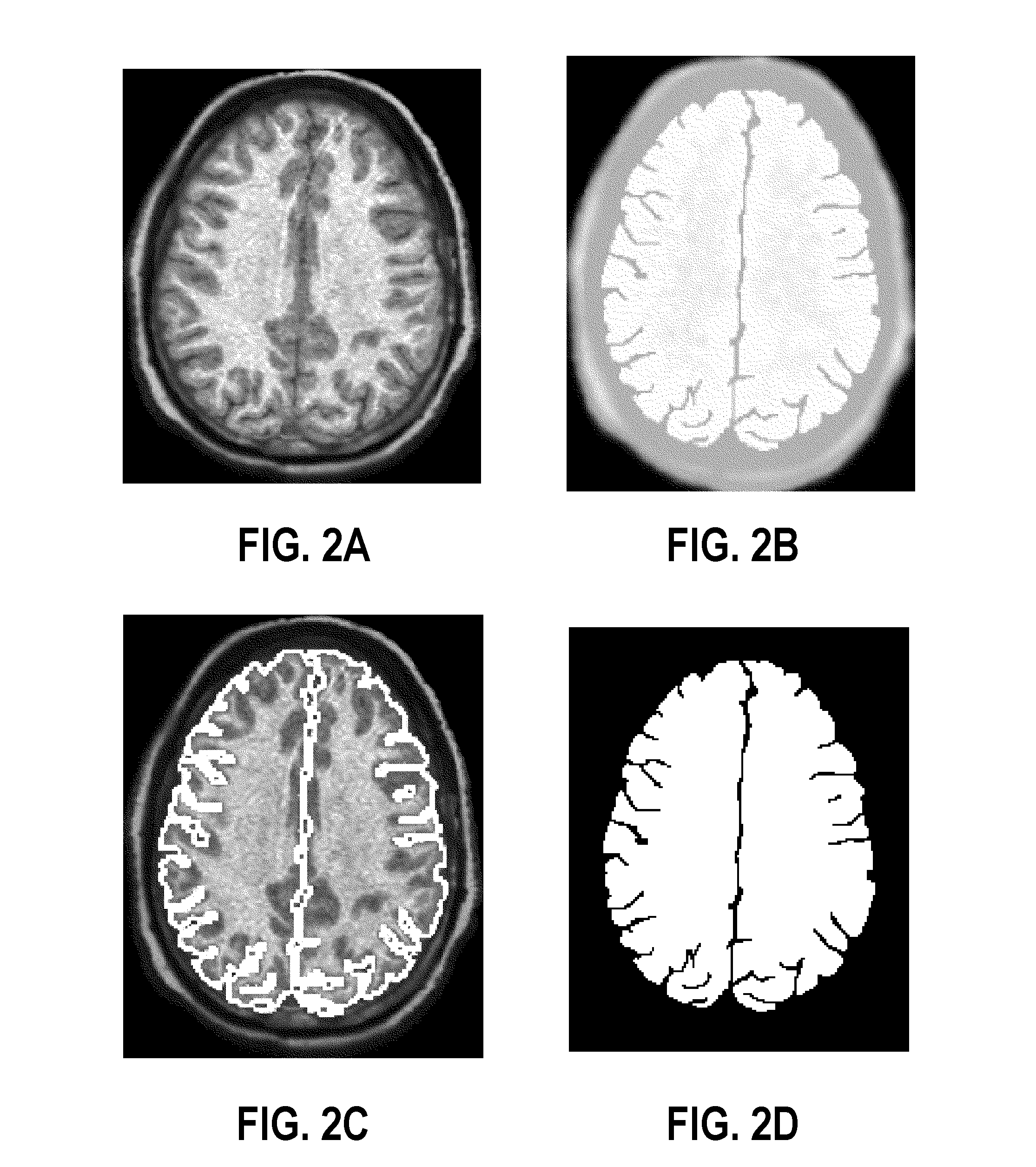Computer aided diagnostic system incorporating 3D shape analysis of the brain for identifying developmental brain disorders
a diagnostic system and brain technology, applied in image analysis, image enhancement, instruments, etc., can solve the problems of severe impairment of children's learning ability, severe impact on the development of social interaction and communication skills, and diagnosis subject to human observational and perceptional errors
- Summary
- Abstract
- Description
- Claims
- Application Information
AI Technical Summary
Benefits of technology
Problems solved by technology
Method used
Image
Examples
working example
[0053]With reference to autism, the proposed approach has been tested on in-vivo data that has been collected from 45 subjects (15 autistic subjects of age 22.1+ / −9.7 years and 30 control subjects of age 20.7+ / −8.5 years). The subjects were scanned using a 1.5 Tesla GE MRI system with voxel resolution of 0.9375×0.9375×1.5 mm3 using a T2 weighted imaging sequence protocol. The “ground truth” diagnosis to evaluate the classification accuracy for each patient was given by five medical experts. The training subset for classification (10 persons in FIG. 7) was arbitrarily selected among all the 45 subjects. The classification accuracy of the k-nearest classifier for both the training and test subjects was evaluated using the x2-test at the 95% confidence level: this correctly classified 14 out of 15 autistic subjects (93.3% accuracy), and 30 out of 30 control subjects (100% accuracy). The accuracy of the traditional volumetric approach is 8 out of 15 autistic subjects (53.3%), and 19 out...
PUM
 Login to View More
Login to View More Abstract
Description
Claims
Application Information
 Login to View More
Login to View More - R&D
- Intellectual Property
- Life Sciences
- Materials
- Tech Scout
- Unparalleled Data Quality
- Higher Quality Content
- 60% Fewer Hallucinations
Browse by: Latest US Patents, China's latest patents, Technical Efficacy Thesaurus, Application Domain, Technology Topic, Popular Technical Reports.
© 2025 PatSnap. All rights reserved.Legal|Privacy policy|Modern Slavery Act Transparency Statement|Sitemap|About US| Contact US: help@patsnap.com



